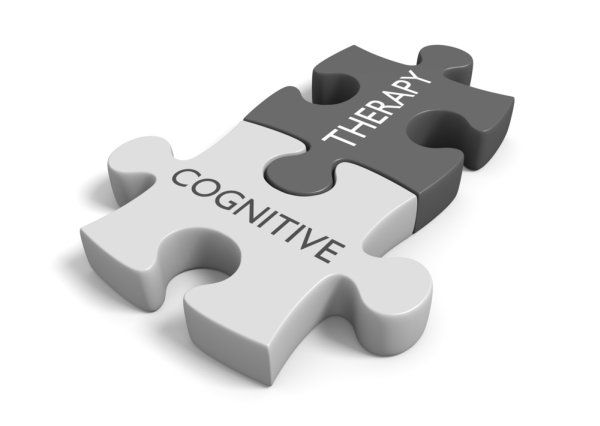The Quiz: Cognitive-Behavioral Therapy and Chronic Pain
Although it is still widely believed that the management of chronic pain usually requires medications or physical interventions, a growing body of research has demonstrated the efficacy of psychological therapeutic modalities.
Shutterstock.com/David Carillet

Although it is still widely believed that the management of chronic pain usually requires medications or physical interventions such as injections or surgery, a growing body of research has demonstrated the efficacy of psychological therapeutic modalities, most notably cognitive-behavioral therapy.
FOR ANSWERS TO THIS 10-QUESTION QUIZ, PLEASE SEE THE LAST PAGE.
ANSWERS
1) Cognitive-behavioral therapy (CBT) has only been found to be effective for chronic pain when there is a comorbid mental disorder also present.
Answer: B. False
There is no evidence that a comorbid mental disorder must also be present for CBT to be effective for the management of chronic pain. However, in patients with chronic pain and comorbid depression, CBT can be beneficial for both.1
2) Although CBT appears to be a promising treatment for chronic pain, as of yet there is insufficient evidence to recommend its use for this.
Answer: B. False
In its report released in 2018, the task force on pain of the Academic Consortium for Integrative Medicine and Health, an organization of 72 North American academic medicine centers and health systems, found that there is sufficient evidence to recommend the use CBT for chronic pain and to accept it as a valid treatment.2
3) A recent review of the literature on management of low back pain reported that CBT should be considered a first-line treatment for chronic low back pain (pain lasting for more than 12 weeks).
Answer: A. True
A comprehensive review of the treatments for low back pain reported that there is sufficient evidence to recommend that CBT be considered as a first-line treatment for chronic low back pain.3
4) When managing chronic low back pain, the recommendation is to:
Answer: E. None of the above
The comprehensive review recommended that CBT should be considered a first-line treatment for chronic low back pain, NSAIDs should be considered a secondline treatment; that opioids should be considered only for limited use for a select group of patients; and stated that there was insufficient evidence to recommend the use of skeletal muscle relaxants. The only other first-line treatment for persistent low back pain recommended by the review is exercise.3
5) The benefits of CBT for chronic low back pain appear to last for at most a few months.
Answer: B. False
Studies have found that the benefits of CBT for chronic low back pain are still present at one- and two-year follow ups.1
6) In addition to providing reduction in pain among patients with chronic low back pain, CBT also appears to improve function.
Answer: A. True
This is an important point as the efficacy of treatments for chronic pain is generally evaluated both on reduction in the level of pain and improvement in function.4
7) CBT for chronic pain has been studied only in and found to be effective only for certain socioeconomic groups.
Answer: B. False
CBT appears to be effective as a treatment for chronic pain among all socioeconomic groups and education levels.5
8) To be effective for chronic low back pain, CBT must be provided on an individual basis.
Answer: B. False
In fact, most of the studies that supported the use of CBT for chronic low back pain employed group therapy.1,4
9) Research indicates that for patients with chronic pain who are misusing opioid analgesics CBT may be:
Answer: C. Effective for managing both problems
Although there is only limited research on the efficacy of CBT for patients who have chronic pain and are misusing opioids, findings so far indicate that it may be efficacious for the management of both problems.6
10) Reflecting concerns about the overprescription of opioid analgesics for the management of low back pain, most insurance carriers are not only increasing utilization management of these medications in order to reduce their use but are also promoting the use of non-opioids and non-pharmacologic therapies such as CBT.
Answer: B. False
Although many insurance carriers including Medicaid, Medicare Advantage, and commercial insurers have instituted policies to try to reduce the amount of opioid analgesics prescribed, there is little evidence that they have done much to promote the use of other treatments including CBT.7
References:
1. Institute for Clinical and Economic Review (ICER). Cognitive and Mind-Body Therapies for Chronic Low Back and Neck Pain: Effectiveness and Value. 2017. https://icer-review.org/wp-content/uploads/2017/03/CTAF_Chronic_Pain_Draft_Evidence_Report_081517.pdf. Accessed August 7, 2018.
2. Tick H, Nielsen A, Pelletier KR, et al. Evidence-Based Nonpharmacologic Strategies for Comprehensive Pain Care. The Consortium Pain Task Force White Paper. 2017. nonpharmpaincare.org. Accessed August 7, 2018.
3. Foster NE, Anema JR, Cherkin D, et al. Prevention and treatment of low back pain: evidence, challenges, and promising directions. Lancet. 2018;391:2368-2383.
4. Cherkin DC, Sherman KJ, Balderson BH, et al. Effect of mindfulness-based stress reduction vs cognitive behavioral therapy or usual care on back pain and functional limitations in adults with chronic low back pain: a randomized clinical trial. JAMA. 2016;315:1240-1249.
5. Thorn BE, Eyer JC, Van Dyke MA. Literacy-adapted cognitive behavioral therapy versus education for chronic pain at low-income clinics: a randomized controlled trial. Ann Intern Med. 2018;168:471-480.
6. Van Denburg AN, Vilardaga JP, Shelby RA, et al. Opioid therapy and persistent pain: can cognitive behavioral therapy help? Pain. 2018;159:411-415.
7. Lin DH, Jones CM, Compton WM. Prescription drug coverage for treatment of low back pain among US Medicaid, Medicare Advantage, and commercial insurers. JAMA Network Open. 2018;1:e180235.

